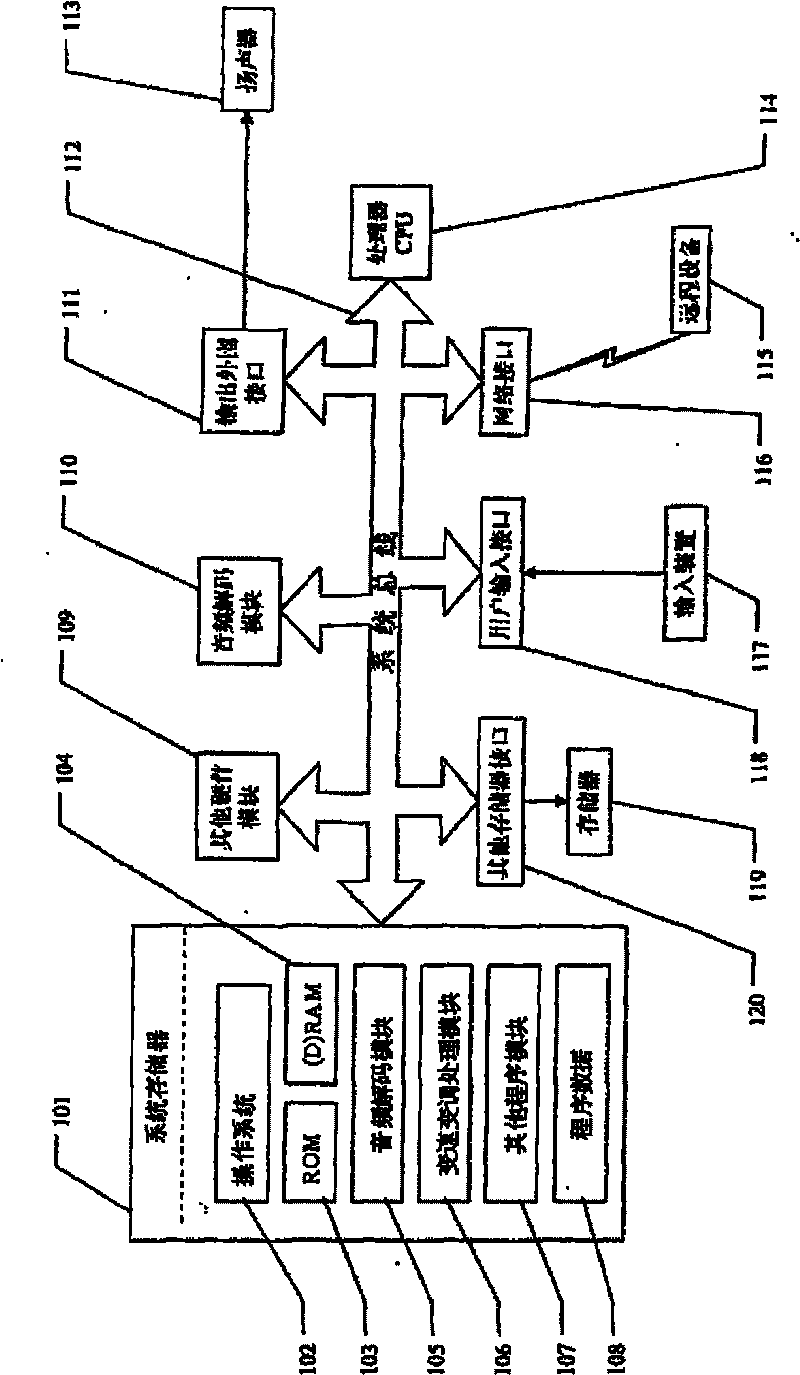Method for realizing sound speed-variation without tone variation and system for realizing speed variation and tone variation
A variable speed coefficient and sound technology, applied in speech analysis, digital recording/reproduction, instruments, etc., can solve problems such as unsmooth noise at the connection, unfavorable speed change and real-time performance, and increase the complexity of the algorithm to achieve low algorithm Complexity, effects that improve sound quality
- Summary
- Abstract
- Description
- Claims
- Application Information
AI Technical Summary
Problems solved by technology
Method used
Image
Examples
Embodiment 1
[0052] When the system has a large internal memory available and can process all audio data at once, the embodiment 1 of the system flow of the variable speed and constant tone processing involved in the present invention is as follows: Figure 7 As shown, in this embodiment, the original signal is read into the input buffer area at once, and according to the variable speed coefficient, utilize the window function described in the present invention to divide a series of signal sub-series (i.e., small segments) from the original sound signal Sound), and then connect these signal sub-series according to their chronological order to get the desired signal. The specific steps are as follows:
[0053] Step 901, system initialization: calculate the window length (i.e. the number of points of the window function) according to the sampling rate of the sound signal and the required variable speed coefficient and construct the window function according to formula (1), and the distance b...
Embodiment 2
[0062] When the available memory of the system is very small or real-time processing is required, the number of samples of data read into the cache at one time l≤2l w , so each time a frame of raw signal data is read in, it is processed into two sections, and the variable speed signal can be obtained by connecting the two sections of data. The specific implementation method is as Figure 10 As shown, the steps are as follows:
[0063] Step 1001, system initialization: same as step 901 in Embodiment 1.
[0064] Step 1002, input data: read the original signal data with a frame length of l into the input data module, wherein the calculation method of the data length l is as follows
[0065] When the speed change coefficient α>1,
[0066] l=l e ·α
[0067] When the speed change coefficient is 0.5≤α<1,
[0068] l=l e
[0069] Step 1003, split data: the original signal data read in step 702 is split into two sections, and the split method is as follows:
[0070] When the va...
PUM
 Login to View More
Login to View More Abstract
Description
Claims
Application Information
 Login to View More
Login to View More - R&D
- Intellectual Property
- Life Sciences
- Materials
- Tech Scout
- Unparalleled Data Quality
- Higher Quality Content
- 60% Fewer Hallucinations
Browse by: Latest US Patents, China's latest patents, Technical Efficacy Thesaurus, Application Domain, Technology Topic, Popular Technical Reports.
© 2025 PatSnap. All rights reserved.Legal|Privacy policy|Modern Slavery Act Transparency Statement|Sitemap|About US| Contact US: help@patsnap.com



